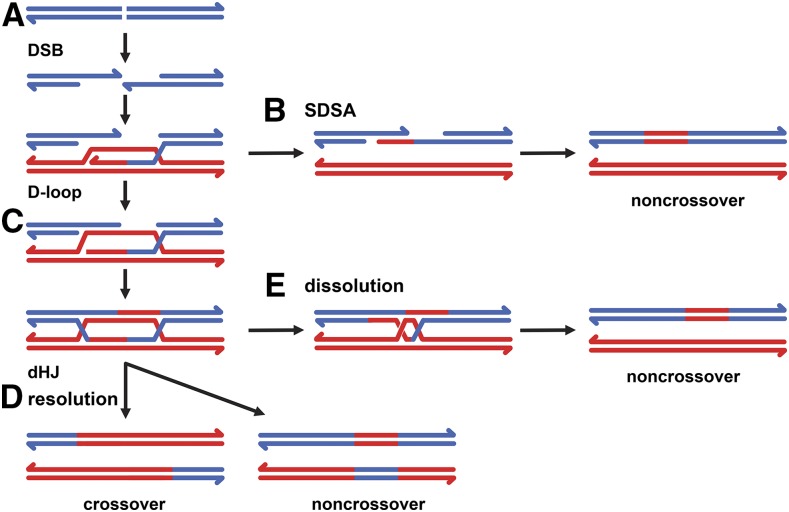Figure 1.
Models of DSB repair by homologous recombination. (A) Blue lines represent two strands of a DNA duplex that has experienced a DSB. HDR begins with resection to expose single-stranded DNA with 3′ ends (arrows). One of these can undergo strand invasion into a homologous duplex (red) to generate a D-loop; the 3′ invading end is then extended by synthesis. (B) In SDSA, the nascent strand is dissociated and anneals to the other resected end of the DSB. Completion of SDSA may result in noncrossover gene conversion (red patch, shown after repair of any mismatches). (C) An alternative to SDSA is annealing of the strand displaced by synthesis to the other resected end of the DSB. Additional synthesis can lead a dHJ intermediate. (D) In DSBR, the dHJ is resolved by cutting to generate either crossover or noncrossover products (one of two possible outcomes for each case is shown). (E) The dHJ can also be dissolved by a helicase-topoisomerase complex to generate noncrossover products.

